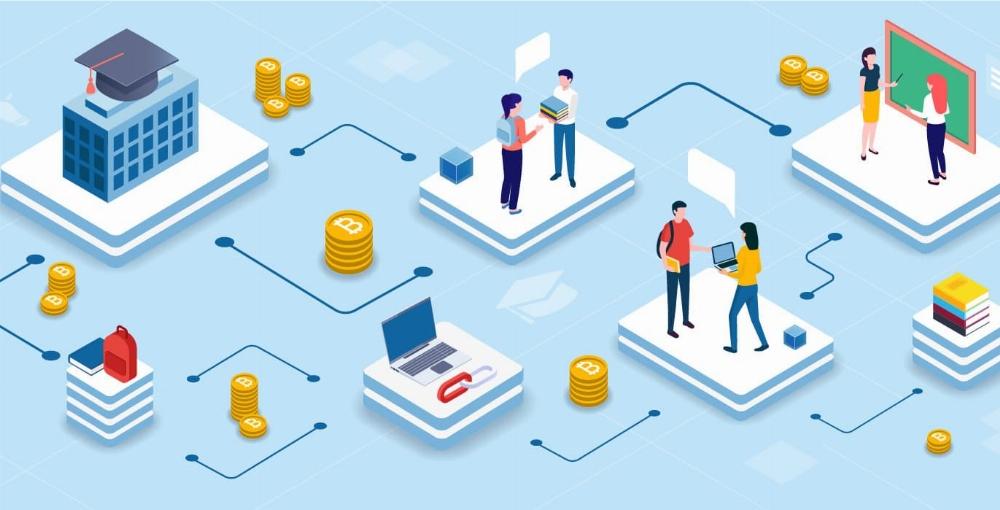How Blockchain Technology is Securing Academic Records: A New Era for Education
Introduction: Embracing Blockchain in Education
In an increasingly digital world,safeguarding sensitive data like academic records has become a top priority for educational institutions. From grade tampering to diploma fraud, traditional systems have long struggled to provide robust protection and transparency. Enter blockchain technology—a revolutionary digital ledger system promising a new level of security and efficiency. In this article, we’ll explore how blockchain is transforming the management of academic records, highlighting practical benefits, real-world use cases, and what lies ahead for the future of education.
What Is Blockchain Technology?
Blockchain is a decentralized,distributed digital ledger that securely records transactions across a network of computers.Unlike traditional databases, no single entity controls blockchain data. Rather, information is stored in cryptographically sealed, unchangeable “blocks,” creating a transparent and tamper-proof record. This “trustless” security model is now being harnessed to protect academic credentials from fraud, loss, and manipulation.
Why Blockchain for Academic Records?
Academic records are often prone to manipulation, loss, and administrative bottlenecks. Blockchain’s features offer unique advantages:
- Immutability: Records entered on a blockchain cannot be altered or deleted,providing lasting security against tampering.
- Transparency: Transactions are visible and traceable, helping institutions and employers verify credentials instantly.
- Decentralization: No central authority is needed, reducing the risk of data breaches or corruption.
- Accessibility: Graduates, employers, and institutions can access and verify documents anytime, anywhere.
- Efficiency: Automated verification eliminates lengthy manual processes and reduces administrative workload.
key Benefits of Blockchain Secured Academic records
Let’s explore the primary benefits that blockchain technology brings to educational data management:
1. Enhanced Security & Fraud Prevention
- forgery-Resistant Credentials: Diplomas and transcripts secured on the blockchain are virtually impossible to forge without detection.
- Tamper-Proof Records: Once academic achievements are recorded, they remain intact and accessible into the future.
2. Instant Verification & Global Recognition
- Faster Job applications: Employers can verify credentials instantly—no more waiting weeks for paper copies to be sent or validated.
- Borderless Validation: International students and professionals avoid bureaucracy and delays when they need to prove their qualifications abroad.
3. Streamlined Administrative processes
- Reduced Workload: Institutions save time and resources by automating the verification process.
- Seamless Transfers: Students can transfer credits and academic histories between institutions with ease.
Real-World Case Studies: Blockchain in Action
MIT Media Lab’s Digital Diplomas
Massachusetts Institute of Technology (MIT) has pioneered the use of blockchain diplomas.Their graduates receive a digital diploma alongside the traditional paper version, verifiable anywhere in the world with just a click.
University of Nicosia: Setting a Global Example
The University of Nicosia in Cyprus was among the first to issue blockchain-secured academic certificates, earning recognition from employers and educational institutions globally.
National Initiatives: India’s Academic Blockchain Consortium (ABC)
India’s government has introduced the Academic Blockchain Consortium (ABC),a national platform enabling universities to issue blockchain-based academic records. This initiative ensures students can access verified documents for employment or further studies—anywhere, anytime.
How Blockchain Secures Academic Records: Technical Insights
- credential Hashing: When an institution issues a diploma or transcript, it generates a unique digital “hash” and stores it on the blockchain. Any alteration in the document will result in a different hash, instantly exposing tampering attempts.
- Smart Contracts: Automated protocols control access and sharing, allowing students to grant or revoke verification rights to employers, universities, or third parties.
- Decentralized Identifiers (DIDs): Students have private control of their digital credentials, sharing onyl what’s necessary—boosting privacy and data sovereignty.
Future Trends: The Blockchain-Powered Classroom
Beyond record-keeping, blockchain in education is paving the way for dynamic learning environments. Here’s what the near future may hold:
- micro-Credentials and Lifelong Learning: Students will collect a “digital backpack” of verified skills and achievements earned from multiple institutions throughout their careers.
- Global Academic Marketplaces: Employers and educational institutions will search for prospective students or candidates based on instantly authenticated achievements.
- interoperability: Seamless integration with learning management systems (LMSs) and national education databases will allow effortless record verification and data transfer.
Practical Tips for Institutions Exploring Blockchain
- Collaborate with Technology Partners: Engage with blockchain developers and edtech startups to design tailored credentialing solutions.
- Pilot with Select Programs: Start by issuing blockchain certificates for professional courses or micro-credentials before scaling up.
- Educate Stakeholders: Offer workshops and resources to help faculty, students, and employers understand blockchain processes and benefits.
- Prioritize Data Privacy: Ensure compliance with national and international data protection laws (like GDPR) while developing blockchain academic records systems.
- Explore Open Standards: Support initiatives like the W3C Verifiable Credentials for interoperability and future-proofing.
Challenges and Considerations
- Data Privacy Concerns: While blockchain enhances security, institutions must carefully manage what data gets stored on-chain vs. off-chain.
- Adoption Barriers: Not all institutions or employers are ready to embrace blockchain, potentially limiting short-term benefits.
- Technical Complexity: Setting up and maintaining a blockchain infrastructure can be complex and requires expert guidance.
- Standardization: The industry needs widely accepted standards for academic credentials to facilitate global interoperability.
Conclusion: A Secure, Transparent, and Efficient Future
Blockchain technology represents a paradigm shift in securing, managing, and sharing academic records. As educational institutions adopt this innovative approach, we can expect reduced fraud, faster verifications, and empowered students who own their learning journeys. Even though challenges remain, the promise of blockchain in education—from digital degrees to lifelong learning credentials—is ushering in a new era of trust and transparency.
By proactively adopting and adapting to blockchain-based recordkeeping, schools, universities, and learners alike can future-proof their achievements and remain at the forefront of global education innovation.

